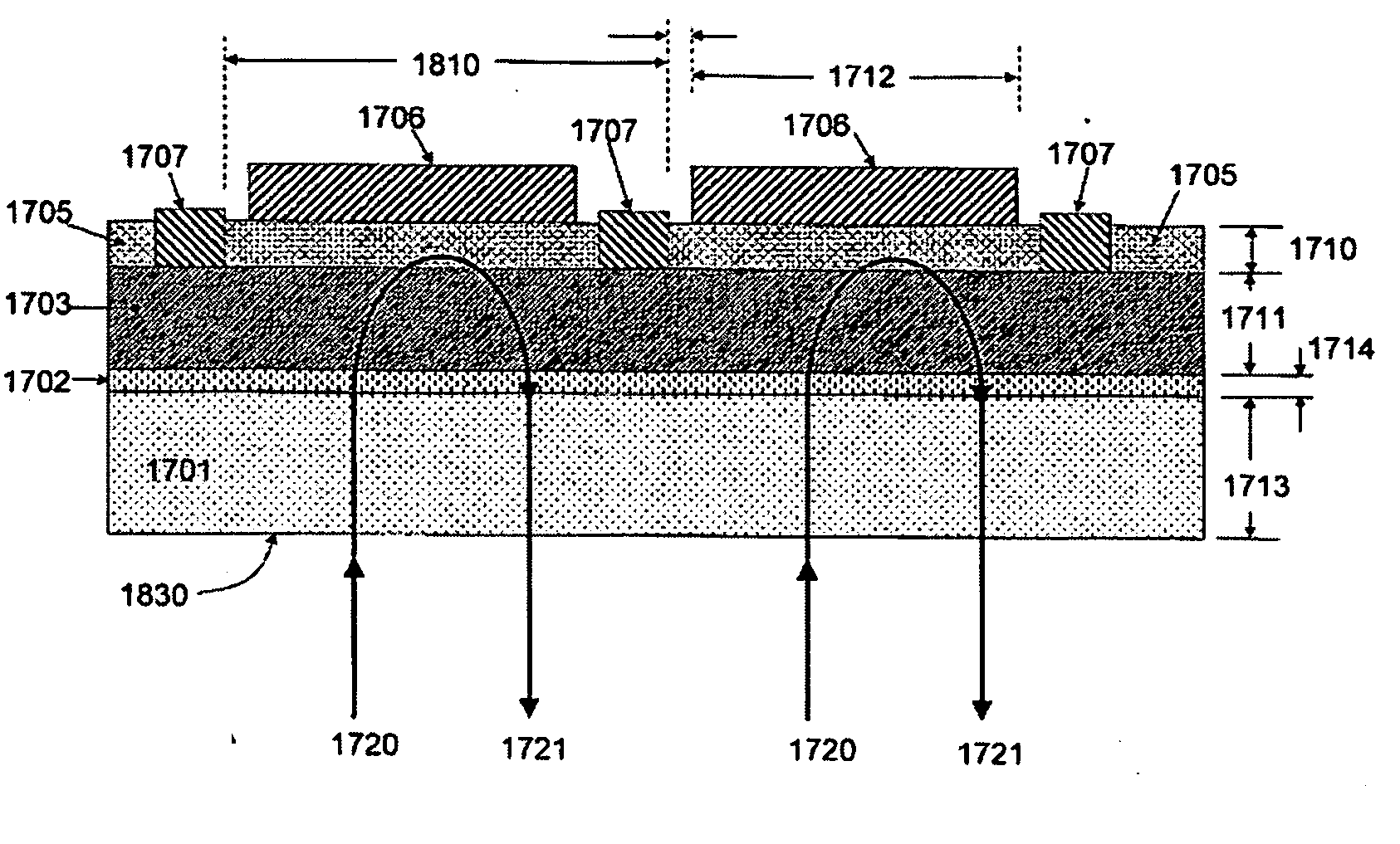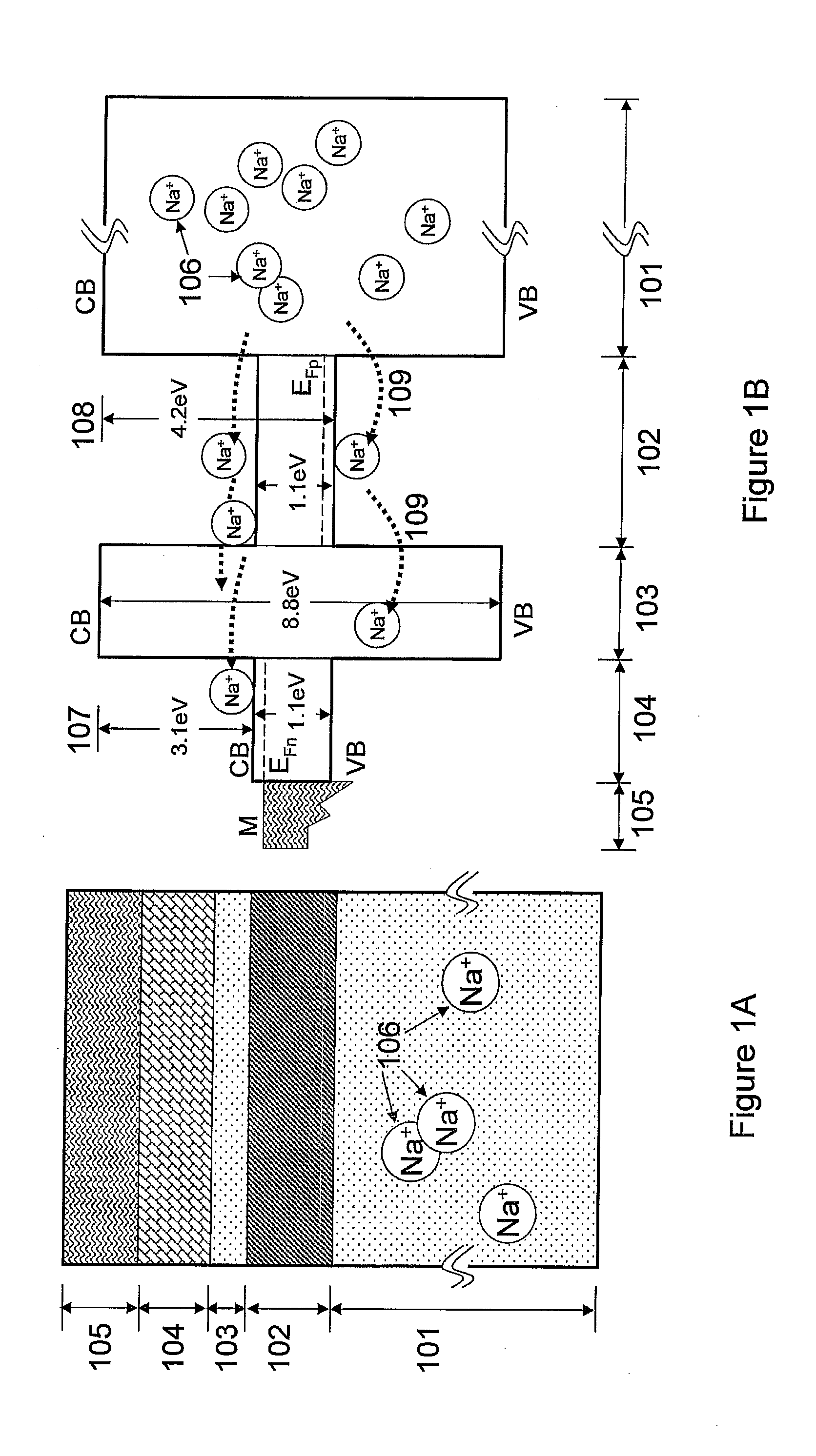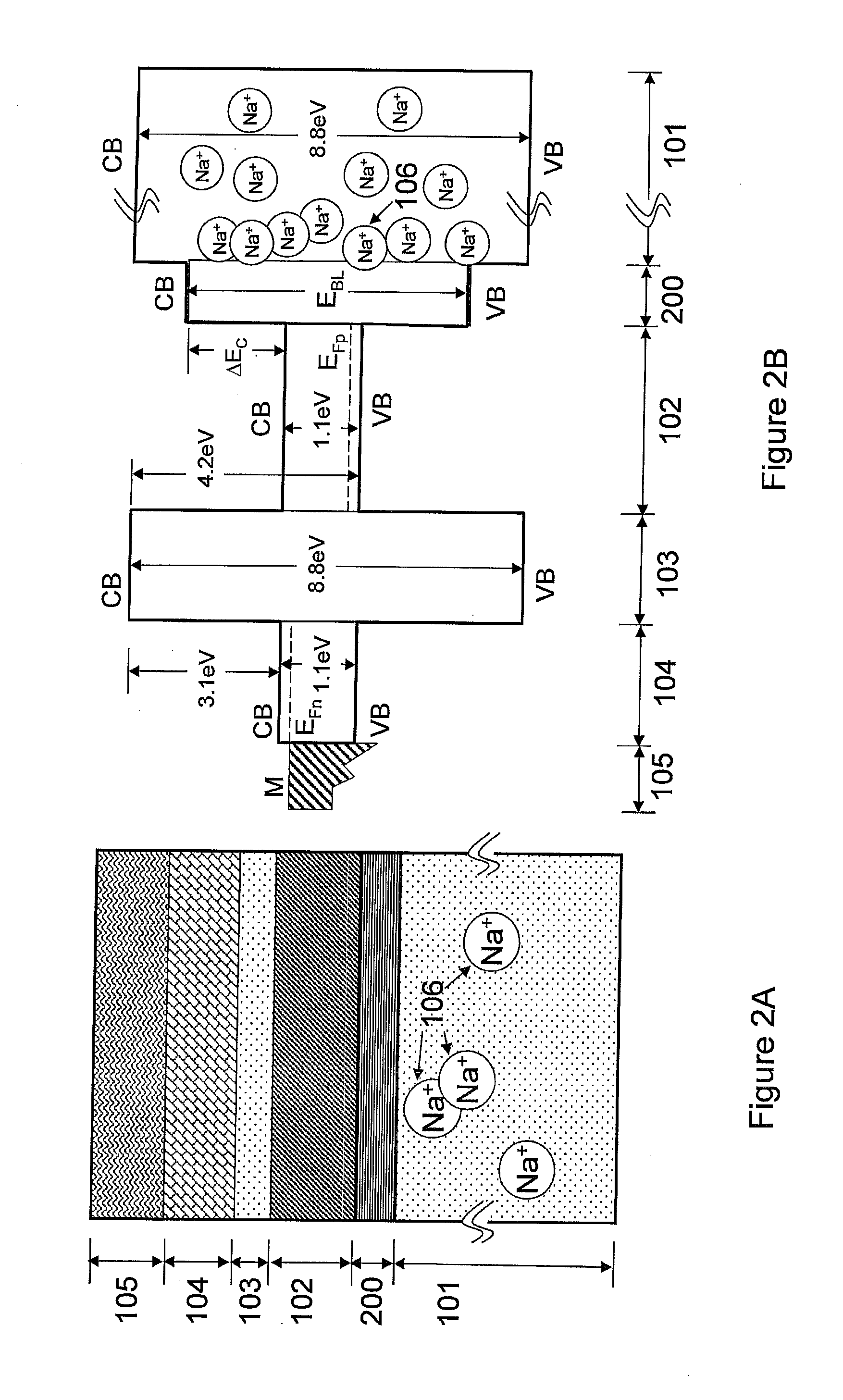Thin Film Semi-Conductor-on-Glass Solar Cell Devices
a technology of thin film semiconductor and semi-conductor, applied in the field of solar cells and thin film transistors, can solve the problems of inefficient utilization of solar spectrum, limited thermal budget required, and high manufacturing cost, and achieve the effect of inhibiting transport and deleterious action, degrading the electronic and/or optical performance of the said devi
- Summary
- Abstract
- Description
- Claims
- Application Information
AI Technical Summary
Benefits of technology
Problems solved by technology
Method used
Image
Examples
example i
Metal-Insulator-Semiconductor Solar Cell Using SoG
[0121]A metal-insulator-semiconductor (MIS) device fabricated upon a glass substrate is disclosed in FIGS. 17A & 17B. The thin film single crystal semiconductor layer 1703 is fabricated upon a transparent substrate 1701 according to the methods of the present invention. Layer 1703 with thickness 1711 is chosen from single crystal Si, and the substrate 1701 with thickness 1713 is chosen from low cost alkali-silicate glass. An alkali barrier layer 1702 with thickness 1714 separates the thin film semiconductor 1703 from the glass substrate 1701 in order to prevent alkali ion contamination.
[0122]The SoG substrate is fabricated into the MIS device via optional selective oxidation of thin film Si layer 1703 into SiO2 regions 1704 and / or 1705. Layer 1705 is a dielectric and / or insulating material and can be chosen from SiO2, SiNx or single crystal rare-earth oxide compositions as disclosed in patent # U.S. Pat. No. 7,199,015, titled “Rare-e...
example ii
P-I-N Solar Cell Using SOG
[0126]Another embodiment of the present invention is the use of multilayer semiconductor structures disposed upon the glass substrate. Another embodiment is the use of single crystal semiconductor layers to form the active regions. Yet another embodiment is the use of Si layers chosen from not-intentionally doped (i.e., substantially intrinsic, i), n-type (n) and p-type (p) doping. For solar energy conversion devices, layered Si devices of the form of p-n and p-i-n diodes are efficient optoelectronic conversion structures. An example p-i-n SoG embodiment is shown in FIG. 19A. The fabrication of the p-i-n SoG structure is possible using the methods disclosed in the present invention. It is understood that p-n junctions and more complex structures are also possible. The glass substrate 1701 is separated from the single crystal thin film semiconductor 1902 layer via a barrier layer 1702 according to the methods disclosed.
[0127]The p-i-n layer structure is comp...
example iii
Multi-junction Wavelength Dependent Absorber Section Solar Cell Using SoG
[0130]The absorption co-efficient as function of wavelength for the thin film semiconductor layer can be used for selecting the thickness and wavelength region operation. In particular, Si exhibits a highly non-linear absorption character as a function of optical wavelengths. Referring to FIG. 16A, it can be seen πabs(λ) in Si varies by almost five orders of magnitude in the range 350≦λ≦1127 nm. Short wavelength photons are therefore absorbed in a very short distance compared to long wavelength photons in the vicinity of the indirect band gap EG.
[0131]Silicon Tandem Cell Based on Selective Absorption
[0132]FIG. 22A discloses a stacked layer structure consisting of two p-i-n diodes comprising different intrinsic absorber thicknesses. In preference, the semiconductor is selected from single crystal Si and the substrate from alkaline-silicate glass. An example embodiment discloses a first p-i-n diode comprising p:S...
PUM
| Property | Measurement | Unit |
|---|---|---|
| transparent | aaaaa | aaaaa |
| band gap | aaaaa | aaaaa |
| radiation of wavelength | aaaaa | aaaaa |
Abstract
Description
Claims
Application Information
 Login to View More
Login to View More - R&D
- Intellectual Property
- Life Sciences
- Materials
- Tech Scout
- Unparalleled Data Quality
- Higher Quality Content
- 60% Fewer Hallucinations
Browse by: Latest US Patents, China's latest patents, Technical Efficacy Thesaurus, Application Domain, Technology Topic, Popular Technical Reports.
© 2025 PatSnap. All rights reserved.Legal|Privacy policy|Modern Slavery Act Transparency Statement|Sitemap|About US| Contact US: help@patsnap.com



